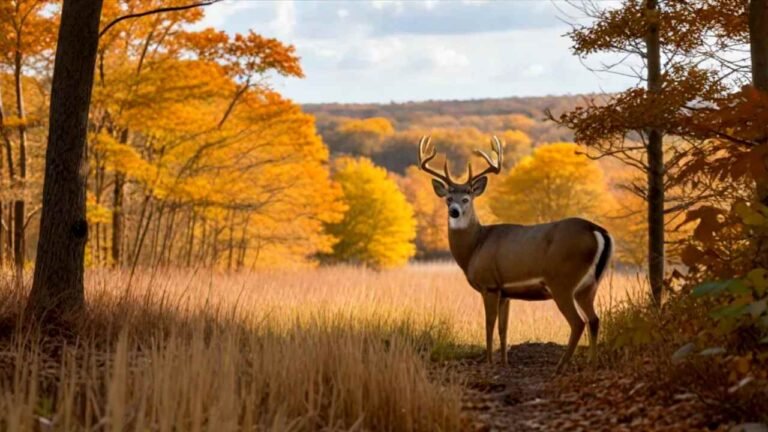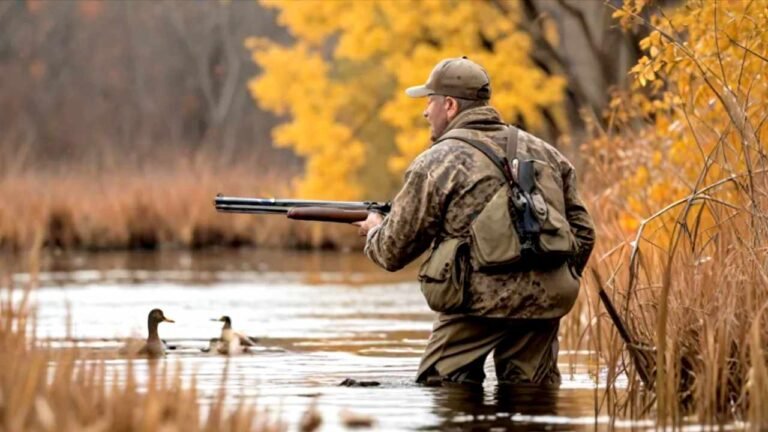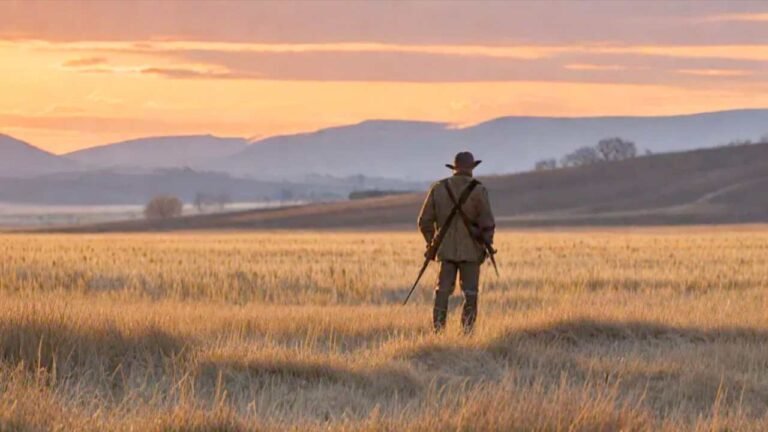West Virginia 2025-2026 Hunting Seasons – Firearms, Tag Rules & Areas
Whether you’re a veteran sportsperson or just starting your outdoor adventures in the Mountain State, knowing the correct dates, regulations, and opportunities is essential for a successful outing. This comprehensive guide covers everything you need to know about West Virginia’s wildlife pursuit calendar for 2025-2026, including prime species, designated areas, and licensing requirements.
From the rugged Appalachian highlands to the lush river valleys, West Virginia offers diverse habitats that host abundant game. Our detailed breakdown includes opening and closing dates, bag limits, special seasons, and essential information to help you plan your outdoor excursions throughout the year.
Quick Reference: Key Species & Dates Summary
| Species | Primary Dates | Method | Special Notes |
|---|---|---|---|
| Whitetail Deer (Buck) | Nov 24 – Dec 7 | Firearms | Electronic registration required |
| Black Bear | Sept 27 – Dec 31 | Archery/Crossbow | County-specific firearm dates |
| Wild Turkey (Fall) | Oct 11 – Oct 19 | All legal methods | Split periods by county |
| Squirrel | Sept 13 – Feb 28 | All legal methods | Youth opener Sept 6-7 |
| Ruffed Grouse | Oct 18 – Feb 28 | All legal methods | – |
| Raccoon | Oct 18 – Feb 28 | All legal methods | 4 per day limit |
Big Game Adventures: Archery & Rifle Opportunities 🦌
Whitetail Deer
The crown jewel of West Virginia’s big game offerings provides multiple opportunities throughout the fall and winter months:
🏹 Archery & Crossbow Period
- September 27 through December 31, 2025
- Statewide opportunity for both bucks and antlerless deer
🔫 Buck Firearms Period
- November 24 through December 7, 2025
- Must be electronically registered within 72 hours
🎯 Muzzleloader Period
- December 15 through December 21, 2025
- Traditional black powder or approved inline muzzleloaders
👶 Youth & Special License Holders
- October 18-19 and December 26-27, 2025
- Class Q and Class XS license holders included
📍 Antlerless Firearms (Select Counties)
- October 23-26, November 24-December 7, December 11-14, December 28-31
- County-specific – check regulations for your area
Black Bear 🐻
West Virginia’s thriving bear population offers excellent opportunities across multiple periods:
🏹 Archery & Crossbow
- Primary: September 27 through December 31, 2025
- Early splits: August 30-September 7, September 20-26
🔫 Firearms (County-Specific)
- Various dates from October 4 through December 31
- Dog and no-dog zones vary by county
- Check pages 37-42 of regulations for specific areas
👶 Youth Bear Opportunities
- September 13-14 and October 18-19, 2025
Wild Boar 🐗
An exciting addition to West Virginia’s big game roster:
🔫 Firearms Period
- October 25 through November 1, 2025
- February 6-8, 2026 (split opportunity)
🏹 Archery & Crossbow
- September 27 through December 31, 2025
- February 6-8, 2026
Turkey Pursuit: Spring, Fall & Youth Opportunities 🦃
Fall Turkey
📅 Primary Fall Period
- October 11 through October 19, 2025
📅 Extended Opportunities (Select Counties)
- October 27 through November 2, 2025
- Some counties: October 27 through November 16, 2025
Spring Gobbler Action (2026)
📅 Regular Spring Period
- April 20 through May 24, 2026
- Bearded birds only
👶 Youth Spring Opener
- April 18-19, 2026
Mountaineer Heritage Special
- January 8-11, 2026
- Combination deer, bear, and turkey opportunity
Furbearer Opportunities & Trapping 🦝
West Virginia’s diverse furbearer population provides excellent trapping and pursuit opportunities:
Raccoon
🎯 Pursuit Period: October 18, 2025 through February 28, 2026 🪤 Trapping Period: November 1, 2025 through February 28, 2026
- Daily bag limit: 4 raccoons (24-hour period from 6 AM to 6 AM)
Fox Species
📅 Red & Gray Fox: November 1, 2025 through February 28, 2026 🌙 Night Activities (with lights): January 1 through February 28, 2026
Specialized Furbearers
- Bobcat: November 1, 2025 – February 28, 2026 (limit: 3)
- Fisher: November 1, 2025 – January 31, 2026 (limit: 1)
- Beaver: November 1, 2025 – March 31, 2026
- River Otter: November 1, 2025 – February 28, 2026 (limit: 1)
- Mink & Muskrat: November 1, 2025 – February 28, 2026
Upland Bird Adventures 🕊️
Ruffed Grouse
📅 Period: October 18, 2025 through February 28, 2026 🎯 Daily Bag Limit: 4 birds 📦 Possession Limit: 16 birds
Ring-necked Pheasant
📅 Regular Areas: November 1, 2025 through January 3, 2026 (roosters only) 📅 Hillcrest WMA: November 8 through December 6, 2025 🎯 Daily Bag Limit: 2 birds (1 at Hillcrest)
Bobwhite Quail
📅 Period: November 1, 2025 through January 3, 2026 ⚠️ Note: Closed on Tomblin Wildlife Management Area 🎯 Daily Bag Limit: 3 birds
Upland Small Game Pursuits 🐿️
Gray Squirrel & Variants
📅 Regular Period: September 13, 2025 through February 28, 2026 👶 Youth Opener: September 6-7, 2025 🎯 Daily Bag Limit: 6 squirrels 📦 Possession Limit: 24 squirrels
Cottontail Rabbit
📅 Period: November 1, 2025 through February 28, 2026 🎯 Daily Bag Limit: 5 rabbits 📦 Possession Limit: 20 rabbits
Snowshoe Hare
📅 Period: November 1, 2025 through February 28, 2026 🎯 Daily Bag Limit: 2 hares 📦 Possession Limit: 8 hares
Other Small Game Opportunities
| Species | Dates | Daily Limit | Notes |
|---|---|---|---|
| Crow | Oct 1 – Nov 22 & Jan 1 – Mar 7 | No limit | Split periods |
| Coyote | Year-round | No limit | Night activities restricted |
| Woodchuck | Year-round | No limit | – |
| Opossum | Year-round | No limit | – |
| Skunk | Year-round | No limit | – |
Migratory Bird Regulations 🦆
All migratory bird activities require Harvest Information Program (HIP) registration. Specific dates and regulations are published annually in August through the West Virginia Migratory Bird Regulations.
Species requiring HIP registration:
- Mourning doves
- Woodcock
- Common snipe
- Various rail species
- Gallinules
Waterfowl: Ducks, Geese & More 🦆
Waterfowl dates are established annually based on federal frameworks and will be published in the separate Migratory Bird Regulations available each August. All waterfowl hunters must:
- Complete HIP registration
- Possess appropriate federal duck stamp
- Follow daily bag and possession limits
- Use non-toxic shot only
Other Waterfowl Opportunities
Mergansers, Scaup & Sea Ducks These species follow the same general waterfowl framework but may have different bag limits and identification requirements. Consult the annual Migratory Bird Regulations for specific details.
Additional Wildlife Opportunities
Protected Species
The following have no open periods:
- Elk
- All song and insectivorous birds
- Owls, hawks, falcons, and eagles
Year-Round Opportunities
Several species may be pursued throughout the year:
- English sparrows
- European starlings
- Rock pigeons
- Coyotes (with restrictions)
Important Reminders & Resources 🎟️
Electronic Registration Required 🔗 Deer, bear, turkey, wild boar, bobcat, fisher, beaver, and otter must be electronically registered within 72 hours of harvest.
🗺️ Wildlife Management Zones
West Virginia divides its territory into distinct wildlife management zones to accommodate varying habitat conditions and wildlife populations. For detailed zone maps and specific regulations for each area, visit the West Virginia DNR Interactive Map.
Different bag limits and season dates may apply depending on the zone, particularly for deer and bear. Always check zone-specific regulations before planning your outing.
🎟️ License Details & Requirements
Resident Licenses:
- Annual Hunting: Available for West Virginia residents
- Combination Hunting & Fishing: Value option for those who enjoy both activities
- Senior License: Special rates for residents 65+
- Lifetime License: One-time purchase for lifetime privileges
Non-Resident Options:
- Annual Non-Resident Hunting
- Short-Term (3, 6, or 10-day) Non-Resident
- Non-Resident Bear Hunting Stamp (additional)
Youth Options:
- Junior Sportsman License (under 18)
- Free Youth Hunting Days
Additional Stamps & Permits:
- Conservation Stamp (required)
- Bear Damage Stamp
- National Forest Stamp (when applicable)
- Trout Stamp (for anglers)
All licenses, stamps, and permits can be purchased online at WV Hunt or through authorized license agents throughout the state.
❓ Frequently Asked Questions
Q: Do I need to register my harvested game?
A: Yes, deer, bear, wild boar, turkey, bobcat, fisher, beaver, and otter must be electronically registered. See page 4 of the regulations for details.
Q: Where can I pursue game in West Virginia?
A: Public lands include state Wildlife Management Areas, National Forests, and certain state parks. Always verify public access and specific area regulations.
Q: Is night pursuit allowed?
A: Limited night pursuit is permitted for specific species like raccoon and fox during designated seasons, with restrictions on methods.
Q: What special opportunities exist for youth sportspeople?
A: West Virginia offers special youth seasons for deer, bear, turkey, and squirrel to encourage participation by young outdoor enthusiasts.
Q: How are pursuit seasons determined?
A: The Natural Resources Commission sets seasons based on scientific research, wildlife biology, and public input to balance recreation with conservation.
📱 Related Resources
🌲 Final Thoughts
The Mountain State offers remarkable outdoor opportunities across its diverse landscapes, from the highlands of the Allegheny Mountains to the valleys of the Ohio River. Before heading out, always review current regulations, obtain proper licensing, and scout your location for the best experience.
Remember that wildlife management through regulated pursuit ensures healthy game populations for future generations. By following regulations, practicing ethical sportsmanship, and respecting private property, you contribute to West Virginia’s rich outdoor heritage.
Whether you’re pursuing whitetails in the highlands, turkeys in the hardwood forests, or small game in the lowlands, West Virginia’s abundant wildlife and beautiful terrain provide memories that will last a lifetime. Happy hunting! 🏹







